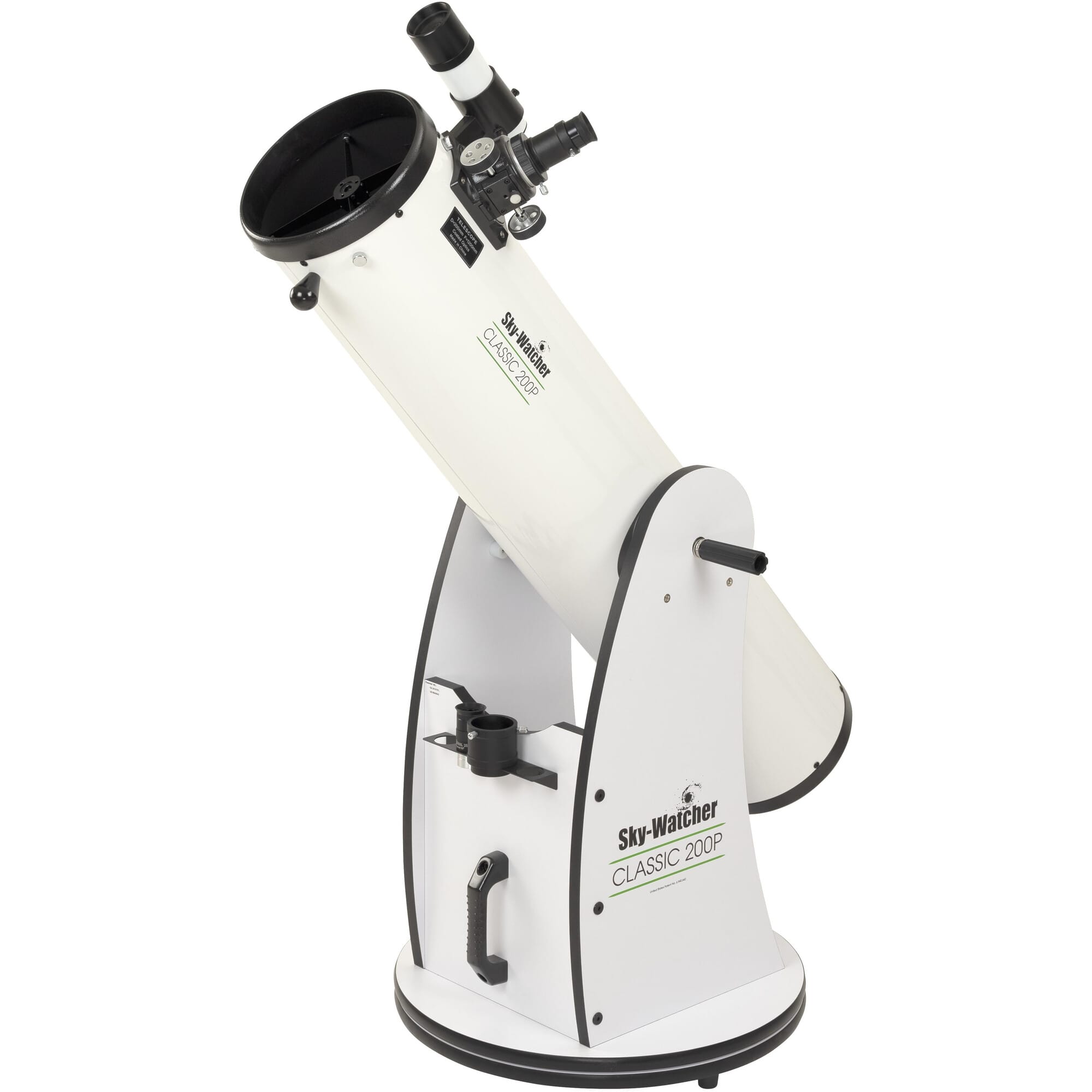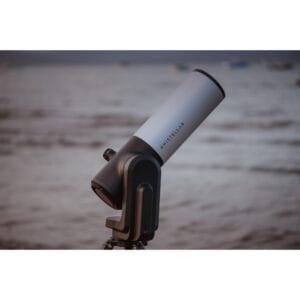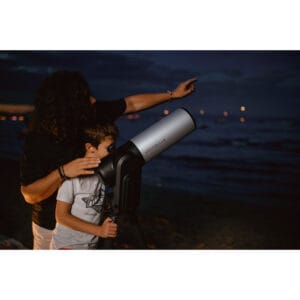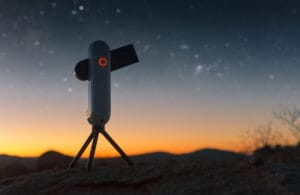Lately, we often get the question “What is a Dobsonian telescope?” To answer this, we decided to write an article about it.
A Dobsonian telescope is for many stargazers the best way to explore the universe simply, powerfully, and affordably. While other telescopes are often complicated to set up or cost a lot for little aperture, a Dobsonian combines everything you really need to visually enjoy the moon, planets, and deep-sky objects. In this blog, you’ll learn what a Dobsonian is, how it differs from other telescopes, and why with a good Dobsonian you’ll never need to upgrade.
What is a Dobsonian Telescope?
A Dobsonian telescope is a type of Newtonian reflector telescope that sits on a simple wooden or plastic rotating base, no tripod, no counterweights, no electronics. You place the telescope on the ground, aim it by hand, and look directly at the night sky. This is called an alt-azimuth mount: it moves smoothly up/down (altitude) and left/right (azimuth).
The telescope itself is a reflector (mirror) and the base is extremely user-friendly. The design became popular in the 1960s through astronomer John Dobson, who wanted to make astronomy accessible to the general public.
What’s the Difference from other Telescopes?
Most beginner models consist of a refractor telescope on a tripod. That looks traditional but has disadvantages:
| Feature | Dobsonian telescope | Telescope on tripod |
|---|---|---|
| Stability | ✓✓✓ (sits low and sturdy) | ✓ (can wobble in wind) |
| Light gathering per euro | ✓✓✓ (large mirror for less money) | ✗ (small aperture, expensive in large sizes) |
| Ease of use | ✓✓✓ (aim by hand) | ✗ (adjustment work, counterweight) |
| Setup time | 1 minute | 5-10 minutes |
A Dobsonian lets you stargaze immediately, without technical barriers.
Why is a Dobsonian Ideal for Beginners?
Because it’s a no-nonsense telescope with maximum performance per euro. You learn to look at the sky immediately, without software, alignment, or manuals. Even children can find objects within 2 minutes. And because you aim by hand, you intuitively learn to know the night sky.
Moreover, with a 150mm or 200mm Dobsonian, you’re buying a telescope you’ll continue to use even as an advanced observer. Many experienced stargazers even return to a Dobsonian for visual sessions.
Is a Dobsonian a Lifetime Investment?
Yes, if you buy a model of at least 150mm (6 inch), you can literally use it for decades. A good 8-inch Dobsonian (like the Sky-Watcher 200) is optically more powerful than many expensive computerized telescopes and under dark skies even lets you see galaxies. You can always add better eyepieces or filters later, without having to replace the entire telescope.
How Does Light Gathering Work in a Dobsonian?
The mirror in a telescope determines how much light you collect. The larger the mirror, the more (and fainter) objects you can see. An 8-inch Dobsonian (203mm) already collects 800x more light than the naked eye, a 10-inch even 1200x.
However, “bigger” isn’t always better, as you’ll read below.
8-Inch vs 10-Inch Dobsonian: What’s the Difference?
The choice between an 8-inch and 10-inch Dobsonian seems simple: take the largest, as it collects the most light. But in practice, other factors come into play:
| Property | 8-inch Dobsonian | 10-inch Dobsonian |
|---|---|---|
| Light gathering | ✓✓ | ✓✓✓ |
| Weight manageability | ✓✓✓ | ✓ |
| Setup time | ✓✓✓ | ✓✓ |
| Practical use | ✓✓✓ (used more often) | ✓✓ (stays inside more often) |
| Price difference | Lower | ± 20-30% more expensive |
Many experienced observers notice they use a 10-inch less often than an 8-inch. The reason? Weight, stiff rotational movements (azimuth axis), and fewer spontaneous sessions. After all, the best telescope is the one you actually use.
What about Semi-Truss Models?
There are also Dobsonians with a semi-truss design: a collapsible tube structure that makes the telescope more compact. Handy in small cars, but:
✗ They often barely save weight
✗ Setup time is longer
✗ You need multiple dust caps and a shroud
✓ Useful when vertical space is really limited
For most people, a classic solid-tube Dobsonian offers the best compromise between stability and convenience.
How much Difference Do You Really See?
The difference in brightness between 6, 8, and 10 inch is noticeable, but diminishing as you go larger. According to the laws of light gathering, the gain between 6 and 8 inch is substantial (77%), from 8 to 10 inch only 56%. This difference is mainly visible with very faint objects but partly disappears in urban areas due to light pollution.
When should You Choose a 10-Inch?
Consider a 10-inch Dobsonian if you:
- Always observe under dark skies
- Have sufficient physical space and strength
- Regularly plan longer sessions
- Want to study many deep-sky objects
For those who regularly want to take quick looks or travel with the telescope, an 8-inch model is often more practical.
Want to Buy a Dobsonian Telescope?
On telescoop.nl you’ll find a carefully selected range of Dobsonian telescopes, including:
- Sky-Watcher Heritage 150/750 – Compact yet powerful
- Celestron Starsense explorer DOB – Helps you with an app, ideal for beginners
- GSO Dobson Deluxe 254/1200 – Serious 10-inch light gatherer
👉 Also check our telescope buying guide for help with your choice.
Conclusion
So, to answer the question “What is a Dobsonian telescope”: A Dobsonian telescope offers maximum optical performance with minimal complexity. For most users, an 8-inch Dobsonian is the best starting point: powerful, portable, and quick to use. Only those who really know what they’re getting into will get more out of a 10-inch. The night sky is for everyone — but the right Dobsonian makes the difference.





